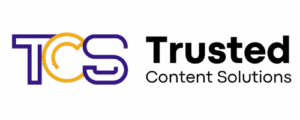Many organizations invest in a new website, social posts and the occasional campaign. But without a strategic content foundation, every initiative feels like starting from scratch. Results become unpredictable, growth stalls and budgets drain into short-term actions that create little lasting impact. A strong content foundation ensures that every piece of content, from landing page to case study, works in the same direction: visibility, authority and conversion. Want to build this structurally for your brand? Schedule a consultation.
What is a content foundation (and what is it not)?
A content foundation is the combination of:
- a sharp positioning and core message
- clear content pillars (themes your brand claims)
- alignment with search intent and customer questions
- formats and guidelines for tone of voice, structure and CTAs
- measurable goals for every funnel stage
It is not a loose content calendar or a list of blog ideas. It is a system that provides direction for copy, visuals, distribution and optimization. Curious what this looks like for your situation? Email us your questions..
Why companies without a foundation get stuck
- Inconsistent messaging
Without a compass, your website fills up with different promises, terms and arguments. Visitors don’t recognize your brand — and neither does Google. A foundation secures a clear, recognizable narrative. - Jumping from topic to topic
Without content pillars, you produce ad hoc. That rarely leads to topical authority. With pillars, you build depth per theme, improving both rankings and click-through rates. - Poor alignment with search intent
Many pieces are written from what the brand wants to say, not from what people search for. Mapping content to intent (informational, commercial, transactional) increases both visibility and conversions. Want to discuss your search-intent mapping? Send a message.. - No scalable production
Without formats, every piece takes longer than necessary. With templates (blogs, cases, pillar pages, comparison pages), production speeds up and quality improves.
The building blocks of a strong content foundation
1. Positioning & core message
Define what you stand for, the problems you solve and why people should choose you. Translate this into a concise messaging architecture (primary message, proof points, differentiators). This guides all copy — from H1 to meta description.
2. Content pillars & topic clusters
Choose 3–5 pillars that directly support your proposition and commercial goals. For each pillar, work with pillar pages, cluster articles, cases and supporting FAQs. This builds true topical authority. Example structure:
- Pillar page (overview + internal links)
- 8–12 cluster articles answering specific sub-questions
- 3–5 cases that provide proof
- 1–2 comparison- of alternatieven-pagina’s
3. Intent-driven architecture
Map content types per funnel stage (see–think–do–care). Think: guides and how-to’s (see/think), buyer’s guides and comparison tables (think/do), product/service pages with proof (do), and onboarding/success content (care). This prevents gaps in your customer journey.
4. Formats & guidelines
Define a fixed structure: title formula, intro (problem + promise), scannable subheadings, bullets where relevant and always a clear CTA. Use checklists for SEO hygiene (H1/H2, internal linking, alt text, structured data where applicable). Want our guidelines? Request them via email..
5. Measurement plan & feedback loop
Without measurable goals, there’s nothing to optimize. Define KPIs per stage: visibility (impressions, rankings), engagement (time on page, scroll depth) and conversion (CTA clicks, leads). Schedule a quarterly content-ops review to identify what works, what to rewrite and where new opportunities lie.
From keywords to strategy (and revenue)
Keywords are the backbone of content prioritization, but they only gain value within a strategy. Link keyword clusters to pillars and intent, determine the content format (guide, comparison, case, landing page), and define the logical CTA per page. Example:
- “Problem + solution” guide → CTA: Free strategy session
- Comparison page → CTA: Request an objective review
- Case study → CTA: Download the full approach
Common mistakes (and how to avoid them)
- Pillars that are too broad: “digital transformation” is too vague. Narrow it to concrete sub-themes where you can build authority.
- No internal linking: every new page should receive at least 2–3 internal links (to and from) to strengthen the cluster logic. Tip: connect new pieces to the pillar page immediately.
- Publishing without maintenance: content ages. Plan revisions every 6–9 months for data, visuals and examples.
- CTA mismatch: informational content paired with aggressive sales CTAs converts poorly. Use CTAs that match the funnel stage and offer low-friction next steps, such as a quick email question..
The operational process (so it actually happens)
- Quarterly focus
Each quarter, choose one pillar to dominate. Publish 1 pillar page, 4–6 clusters, 1–2 cases, 1 comparison page and update 3 existing pages. - Editorial rhythm
Work in two-week sprints: ideation → outline → production → review → publication → distribution → measurement. With clear roles, quality stays consistent. - Intentional distribution
Repurpose highlights on LinkedIn, in your newsletter and as snippets on product/service pages. Add internal links at launch — not “later.”
What does it deliver?
- Higher visibility: topical authority boosts your chances of top-3 rankings across clusters, not just “one keyword.”
- More and better leads: content better matches decision moments, making CTAs more natural and effective.
- Lower cost per lead: evergreen content compounds over time, reducing reliance on paid channels.
- Faster production: with formats and guidelines, output increases without sacrificing quality.
Ready to build your foundation?
Whether you’re starting from scratch or restructuring your existing content: a strong content foundation makes growth predictable and scalable. Want a quick audit of your current content plus a concrete 90-day plan per pillar? Email us.Prefer to discuss your pillars, clusters and CTAs directly? Schedule a short call via Calendly.

